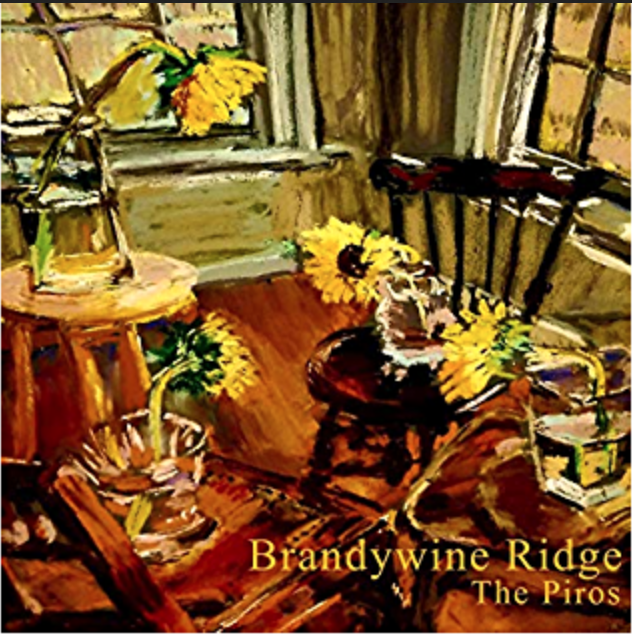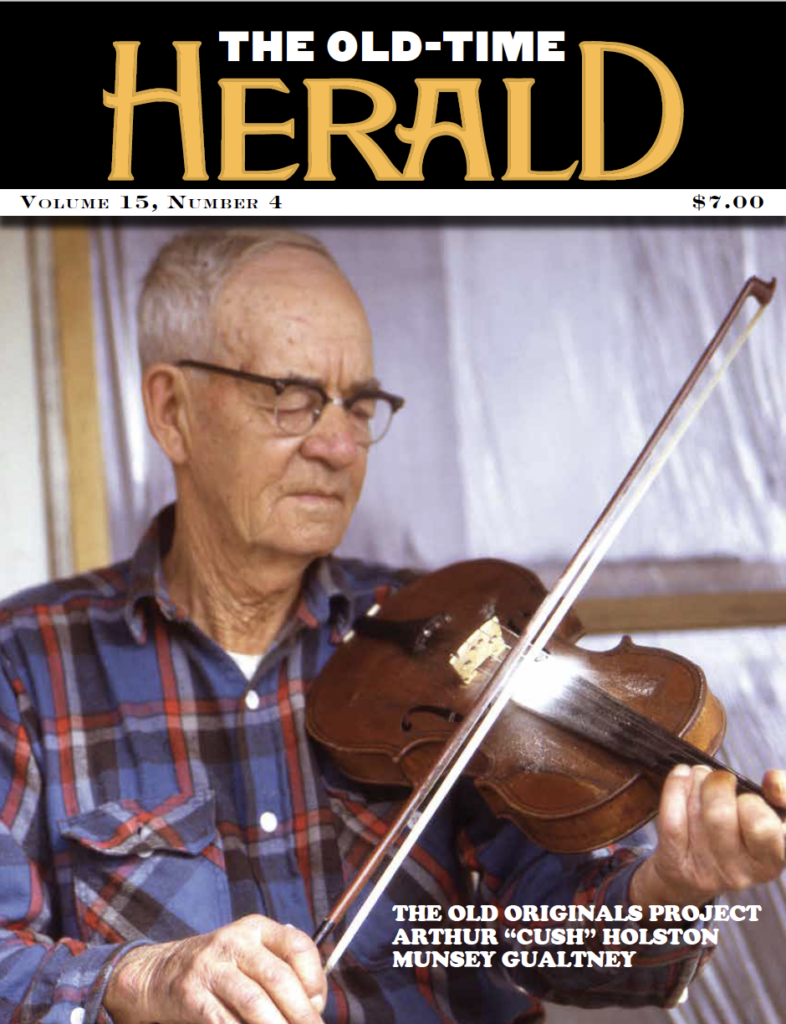I suspect that nearly all parents who bring their children to old-time festivals dream of having their own family band. Mark and Amy Piro made it happen, and it sure does sound good. The Piros are: Ian (bass and ukulele), Evan (lead mandolin), Yuri (rhythm and lead guitar), Mark (fiddle and rhythm mandolin), and August (beat box and other instruments). On tracks where they felt a banjo was needed, they asked friends: Paul Sidlick, Walt Koken, and Joel Wennerstrom. Vinaya Marty Lebenson adds harmonica to “Old Cumberland.”
Some of these tunes, old and new, are done in traditional string band style: play the tune through with few if any variations as many times as would fit on a 78 RPM record, then stop, just the way that Doc Roberts would do it back in the late 1920s. Examples of this are the traditional tunes “No Corn on Tygart,” “Bitter Creek,” and the recently composed “Taylor Girls” by Matt Brown. Pat Conte’s “Old Cumberland” features the wonderful slap-tongue harmonica of Vinaya Marty Lebenson behind Piro family backup.
A second approach might be called the “developmental” approach: start with one instrument playing the melody and add other instruments as a second melody instrument, then rhythm, and eventually start playing variations on the melody. This is not common in the old-time world and requires some time spent working out an arrangement for which instrument comes in at what time, how to stay out of each other’s way and yet achieve a sound that slowly builds from the simple to the complex. Geoff Seitz’s “Gravois Creek Pump” is done very successfully in this manner, as are “Gypsy Dance” and “Paddy, Won’t You Drink.” The only other band that I know of using the developmental approach is also a family band: three Amundsen siblings, Jubal’s Kin’s debut CD in 2012.
The most complicated and also the most densely arranged piece is “Reverse Chronology of Cooley Anne” which takes the listener 5000 miles south and east from Appalachia into Tanzania, and back into Appalachia, all in two and half minutes. The first thing you hear is the rhythm sounds of August Piro, “the human beat box.” Paul Sidlick starts playing “Julianne Johnson” in rhythm, then a second banjo joins (also Paul) an octave lower on minstrel banjo. As this continues, you start to hear rhythmic chanting by a group of people (which, you learn from the liner notes, are members of the Ngorongoro Masai of Tanzania), which gets louder and then fades away, while you still hear Julianne Johnson in the background. The listener has traveled to Africa and back as well as back in time, but has not returned to the starting place. This is a helix, not a circle, and deserves repeated listening.
This isn’t just a music CD; the art of Amy Piro is an integral part of the CD. The cover, titled “Jam Circle” shows the Piros’ jam room, but there are no people in the room. Instead, vases with sunflowers, who seem to be looking at each other, just as good musicians who make music together need to look at each other to communicate. (Could this be depicting the pandemic of 2020, when we couldn’t see each other to make music together?) On the back cover, “Ambition” depicts a group of similar flowers with one flower much taller than the others.
I do not know of any other CD like this, with all of its layers and not-so-hidden meanings and depths. The liner notes on the website offer some clues, but are only a starting point. I love it.


Leave a Reply